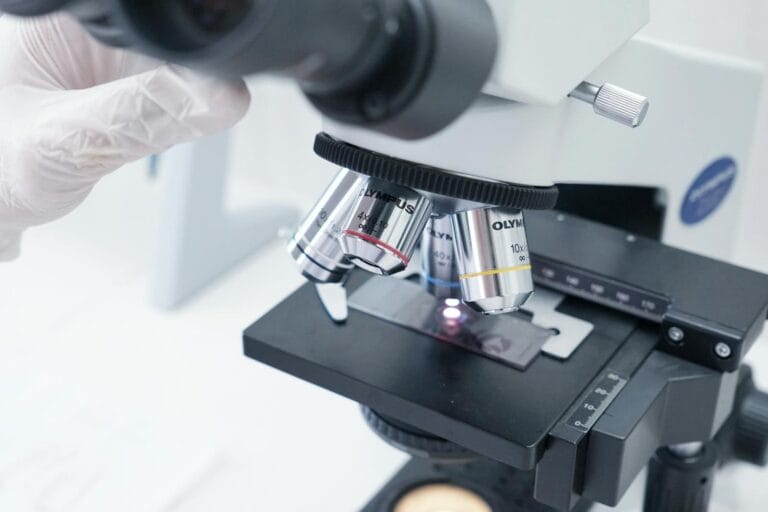
Pesticide Testing Using the In Vitro Approach

- In Vitro Approach for Product Testing
- In Vitro Approach as a Method for Testing Modern Pesticide Products
Pesticides have become an essential part of modern agricultural systems due to their ability to control pests and plant diseases, thereby increasing crop yields and improving product quality. However, alongside their benefits, pesticide use also raises concerns regarding their negative impacts, particularly in terms of toxicity to humans, non-target animals, and the environment.
Therefore, assessing the safety of pesticides, especially their active ingredients, has become a critical aspect before such products are widely used. In an effort to ensure safety, various toxicity testing methods have been developed. One approach that has gained increasing attention is the in vitro method. This approach not only supports ethical principles in research but also offers several technical advantages and improved efficiency in testing the active ingredients of pesticides.
Read more:
In Silico Approach as an Alternative Method for Pesticide Toxicity Testing
In Vitro Approach for Product Testing
In the field of toxicological research, the term in vitro refers to studies conducted outside a living organism, typically using cell or tissue samples placed in an artificial environment such as test tubes or petri dishes. In vitro testing has become an important approach for evaluating the safety and toxicological impact of various chemical substances, including active ingredients in pesticides. Pesticides generally contain active ingredients designed to kill or control pests.
However, before being widely used in agricultural environments, these active ingredients must undergo a series of toxicity tests to ensure their safety for humans, animals, and the environment. In vitro testing serves as a highly relevant alternative, especially during the initial stages of such assessments. In vitro methods offer many advantages over traditional animal-based (in vivo) testing.
One major benefit is the ability to tightly control test conditions such as temperature, pH, and test substance concentration. This allows researchers to better understand how a pesticide’s active ingredient directly interacts with specific cells or tissues. In addition, this method offers a high degree of standardization and reduces variability between experiments, leading to more consistent results.
From both ethical and efficiency perspectives, in vitro testing supports the 3Rs principle (Reduction, Replacement, and Refinement) by reducing the number of test animals, replacing animals with non-animal methods, and improving procedures to be more humane. In vitro testing is also more cost-effective, requires smaller amounts of test substances, and produces less toxic waste compared to conventional methods.
With these advantages, the in vitro approach has become a key strategy in supporting the development of safer and more sustainable pesticides. The use of this method not only accelerates the evaluation process of active ingredients, but also helps minimize negative impacts on animals and the environment.
In Vitro Approach as a Method for Testing Modern Pesticide Products
Various in vitro testing methods have been developed to assess the toxicity potential of active pesticide ingredients on different biological systems. In immunotoxicity testing, two commonly used methods are the iodo-nitro-tetrazolium reductase test and the leukocyte migration-inhibition assay. The first method measures phagocyte activity based on their ability to reduce a dye compound into a colored form, which reflects immune cell function in responding to foreign substances.
Meanwhile, the second method evaluates the inhibition of leukocyte migration induced by toxic substances, indicating potential disruption to the immune system. Besides the immune system, many pesticides are also suspected of disrupting the reproductive and endocrine systems, thus requiring hormonal toxicity tests. Several methods used include transactivation assays, which evaluate interactions between pesticide compounds and estrogen (ER) and androgen (AR) receptors.
These hormonal effects can also be tested through CYP19 aromatase enzyme activity in human placental microsomes, as well as by measuring mRNA expression of ERα and ERβ as indicators of estrogen-like activity. In addition, reporter gene assays and aromatase inhibition tests are also effective screening tools for detecting endocrine-disrupting compounds. To evaluate potential genetic damage, genotoxicity or mutagenicity tests are employed.
A common method is the sister chromatid exchange (SCE) assay in human lymphocytes, which detects the exchange of genetic material between chromatids as a sign of DNA damage. This method is sensitive in measuring the mutagenic and carcinogenic potential of pesticides. Such testing is important to determine how hazardous a pesticide is to those who are frequently exposed, such as farmers or household users.
Interestingly, chicken embryos can also be used as a testing model because they possess the ability to metabolize chemicals similarly to the human body. By using chicken embryos, researchers can conduct micronucleus tests and comet assays to evaluate whether a pesticide can directly damage DNA. These tests help ensure the safety of pesticides before widespread use.
Some types of pesticides are hematotoxic, meaning they are toxic to the blood system. Their effects can lead to serious disorders such as agranulocytosis (a drastic drop in certain white blood cells), neutropenia (neutrophil deficiency), thrombocytopenia (a drop in platelets), and anemia (red blood cell deficiency). To evaluate this potential, researchers conduct hematotoxicity tests using blood progenitor cells from humans and rats.
They observe colony-forming unit-granulocyte and macrophage (CFU-GM), which are precursor cells that eventually develop into white blood cells. The results show that pesticides known to be toxic to the blood in vivo also inhibit the development of these cells in laboratory (in vitro) testing. Some insecticides, such as organophosphates and carbamates, can be neurotoxic.
To assess the risks, in vitro tests are conducted by measuring the pesticide's ability to inhibit the enzymes acetylcholinesterase and neurotoxic esterase in chicken and human brains. The resulting IC₅₀ values can predict the level of risk posed by the pesticide to the nervous system. Additionally, nerve cell cultures are used to assess the impact of pesticides on nerve cell development, such as neurite growth. These tests are essential for detecting early-stage neurotoxic effects, especially during the developmental phase.
Make sure your pesticides pass the test in a laboratory certified by the Ministry of Agriculture before being widely used, pesticide products need to go through a series of toxicity tests with in vitro methods that are more efficient, accurate, and in accordance with ethical principles. Make sure the testing is carried out in a laboratory that has been registered and has a Decree (SK) from the Ministry of Agriculture, so that the test results are recognized and in accordance with national regulatory standards. This step is important to ensure that your product is safe for humans, animals, and the environment.
Author: Dherika
Editor: Sabilla Reza
References:
Andersen, H.R., Vinggaard, A.M., Rasmussen, T.H., Gjermandsen, I.M. and Bonefeld-Jørgensen, E.C. (2002) Effects of Currently Used Pesticides in Assays for Estrogenicity, Androgenicity, and Aromatase Activity In Vitro. Toxicol. Appl. Pharmacol., 179, 1-12.
Grünfeld, H.T. and Bonefeld-Jorgensen, E.C. (2004) Effect of in vitro estrogenic pesticides on human oestrogen receptor α and β mRNA levels. Toxicol. Lett., 151, 467-480.
Jamil, K., Shaik, A.P., Mahboob, M. and Krishna, D. (2004) Effect of organophosphorus and organochlorine pesticides (monochrotophos, chlorpyriphos, dimethoate, and endosulfan) on human lymphocytes in-vitro. Drug Chem. Toxicol., 27, 133-144.
Jang, Y., Kim, J.E., Sang., H.J., & Myung, H.C. (2014) Toward a Strategic Approaches in Alternative Tests for Pesticide Safety. Toxicological Research, 30(60), 159-168. http://dx.doi.org/10.5487/TR.2014.30.3.159.
Kojima, H., Katsura, E., Takeuchi, S., Niiyama, K. and Kobayashi, K. (2004) Screening for estrogen and androgen receptor activities in 200 pesticides by in vitro reporter gene assays using Chinese hamster ovary cells. Environ. Health Perspect., 112, 524-531.
Parent-Massin, D. and Thouvenot, D. (1993) In vitro study of pesticide hematotoxicity in human and rat progenitors. J. Pharmacol. Toxicol. Methods, 30, 203-207.



